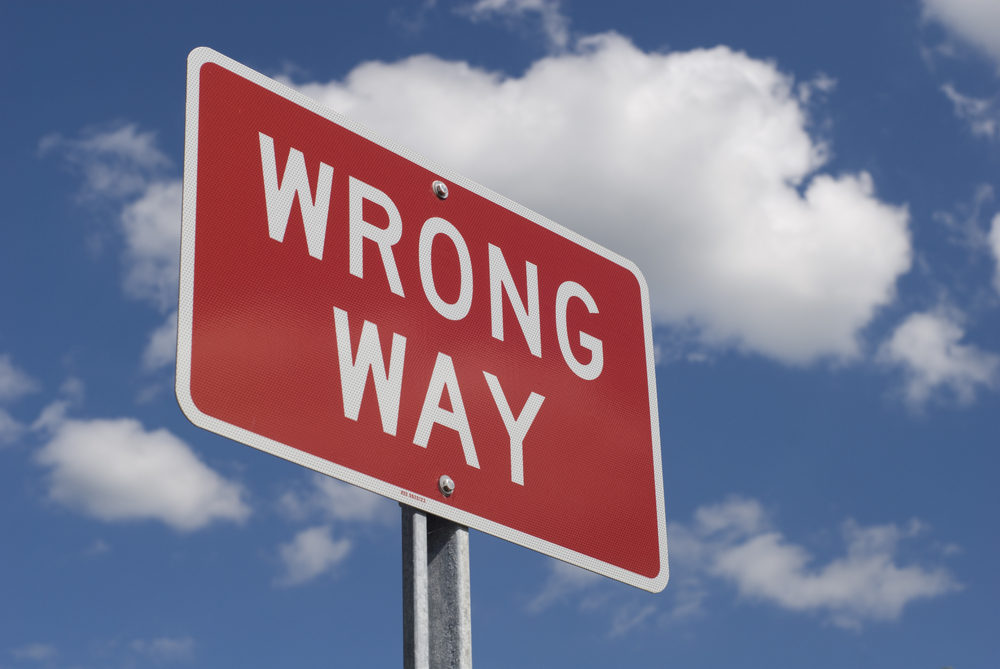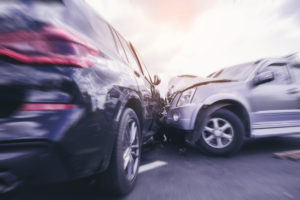
If you Google “wrong way crashes in Texas,” you’ll be served up endless pages of news stories about someone’s life tragically lost at the hands of a wrong-way driver.
Such was the case for Dallas police officer Jacob Arellano, just 25, who died last month on his way to work when a sedan driving the wrong way slammed into his car head-on, pushing it in front of a tractor-trailer that hit it a second time.
You never expect to see a car speeding directly at you while on the road. And while one-way crashes are rare, making up less than one percent of Texas’ car crashes annually, they almost always result in catastrophic or fatal injury.
Texas Leads the U.S. in Wrong-Way Crashes
According to AAA Texas, the state holds the record for wrong-way auto accidents in the country. Records from the Texas Dept. of Transportation (TxDOT) revealed that Dallas County already had 16 wrong-way crashes this year – more than all of 2021 and every year before since 2017. Here are a few more disturbing statistics:
- Out of the 9,560 traffic fatalities nationwide during 2022’s first quarter, more than 1,000 of them occurred in Texas
- 613 people died in wrong-way crashes in 2021, a 15% increase from 2020
- 24% of those deaths involved drunk driving
- It has been 22 years since Texas had a single day without a traffic fatality
Wrong-way crashes usually occur on highways, one-way streets, or other restricted roadways. Texas’ large number of major cities makes it highly susceptible to one way-crashes. Additionally, both I-20 and I-35, two of the nation’s deadliest highways, run right through Dallas/Ft. Worth.
What makes wrong–way car accidents so dangerous is the nature of the (usually head-on) impact. Force is magnified by the drivers traveling in opposite directions, making the speeds of both vehicles a factor. Even a wrong-way crash at a lower speed can be devastating.
What Type of Drivers Cause Wrong-Way Crashes?
Sadly, Texas is also the fifth-highest state in the U.S. in all motor vehicle fatalities. Distracted driving and driving drunk are the biggest contributors to wrong-way crashes in Texas.
Distracted Driving
It’s easy to see why distracted drivers might go the wrong way down a highway or one-way street. Regardless of the distraction, drivers can easily enter an exit ramp or miss a one-way warning sign if they aren’t paying attention.
Distracted driving is responsible for almost one in five Texas car accidents. More than 400 people were killed this way in 2021, a 17.3% increase from 2020.
Anything that takes your eyes off the road or hands off the wheel is distracted driving. And a second or two is all it takes for a disaster to strike.
Cell phones are the most common type of distraction, and drivers using them are 2,300 percent more likely to cause a crash. According to the National Highway Traffic Administration (NHTSA), sending or reading a single text at 55 mph is the same as traversing an entire football field blindfolded. Other examples of distracted driving include:
- Eating, drinking, or smoking
- Grooming (hair, makeup, changing clothes)
- Searching for something inside the car
- Adjusting the radio, temperature, or GPS controls
- Interacting with passengers or pets
Always remember to take care of any potentially distracting tasks before you begin driving.
Driving Under the Influence
Most wrong-way crashes happen between midnight and 5 a.m., and 60-75% involve alcohol. They commonly spike around 2 a.m. as bars close and drunk patrons attempt to use freeway intersections or highway entrance/exit ramps. Drivers often turn left onto an exit ramp instead of crossing under the freeway before turning left. And most of these drunk drivers are heavily intoxicated, with more than twice the legal blood alcohol concentration (BAC).
Now that the holiday season is here and many will be taking road trips to celebrate and toast with family, drunk driving will be at its highest. In 2019, alcohol-related deaths jumped from 28% of the annual total to 36% during the New Year’s period.
A 2021 study published by the AAA Foundation for Traffic Safety compared “right-way” and “wrong-way drivers” in the same accident to figure out what increases the odds of a wrong-way crash. Drunk drivers topped the list by causing six out of ten wrong-way incidents. Drivers over the age of 70 and drivers without a passenger were the other groups most likely to cause a wrong-way crash. Older drivers can get confused or have trouble reading signs; solo drivers don’t have anyone to tell them they’re going the wrong way.
Texas Ramps Up Wrong-Way Crash Prevention Efforts
Experts have researched problem areas for one-way crashes for over 20 years. Basic solutions have included raised pavement markers, which reflect the red lights of a vehicle driving the wrong way, and lowering “Do Not Enter” and wrong-way warnings to just a few feet off the ground to accommodate intoxicated drivers, who usually focus only on the road directly ahead instead of around them.
But the steady increase in wrong-way crashes despite these efforts has experts turning to more sophisticated detection and alert technology.
Radar, along with sensors built into the pavement and signs, can detect the specific movement of a car traveling the wrong way. Flashing lights and audio warnings can alert drivers to turn around. These have been successful in alerting drivers to self-correct.
Message board systems and thermal technology are also being used on Texas toll roads, which are not as easy to turn around on, to alert drivers well before they merge the wrong way into traffic. These systems can also alert Texas Toll Authority officials.
Future possibilities include direct communication with other vehicles to warn them of a wrong-way driver nearby.
Beginning in Spring 2024, the latest detection and prevention technology will arrive in some high-risk Dallas locations, including along Central Expressway between Knox-Henderson and Woodall Rodgers Freeway and the Woodall Rodgers Freeway itself.
Officials are also actively reviewing wrong-way signs and markers in hundreds of Dallas County intersections to see what can be improved.
Were You Injured in a Texas Wrong-Way Crash?
It’s encouraging to see all the good work being done to prevent Texas wrong-way crashes, but driver behavior will always be the most significant factor.
If you are injured in a wrong-way crash due to another driver’s negligence, you have the right to hold that driver financially responsible for your medical bills, lost wages, and pain and suffering. Navigating insurance companies and medical records isn’t something you should have to do alone.
The seasoned Texas auto accident lawyers at the Cochran Firm Texas have the expert knowledge and firm conviction to help you through a wrong-way crash claim. Focus on healing – we’ll do the rest. Call us at 1-800-THE-FIRM (800-843-3476) or contact us online or via live chat 24/7 to get started.

At Cochran Texas, we understand that needing legal help can be scary. It doesn’t have to be. We are a trusted leader in the legal profession and in our community. We know you are more than a case number. We get to know you as a person. This allows us to offer a balanced and thoughtful approach to giving you the best possible legal representation. Our mission is to protect the legal rights of ALL people in our community. No matter your race, gender, background or income level you have a right to skilled legal help. Call us at 800-843-3476.















Comments for this article are closed.